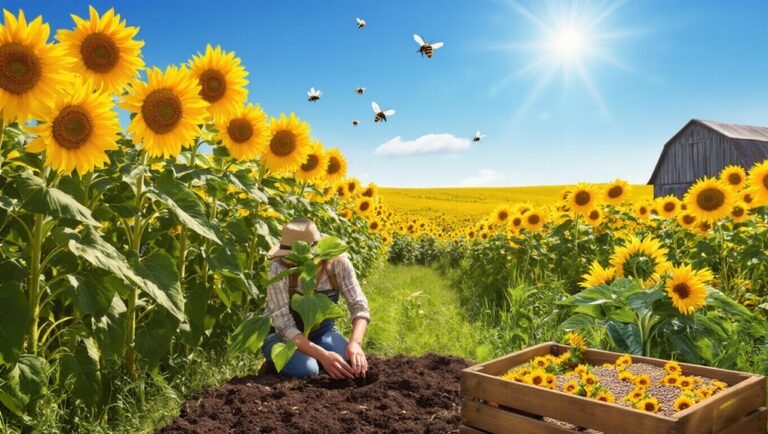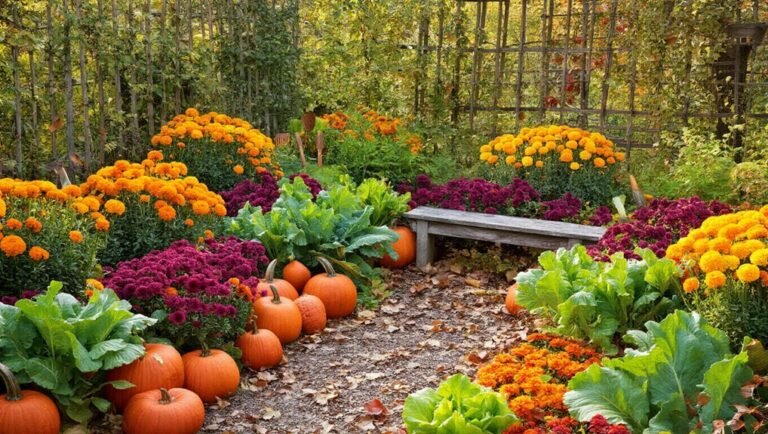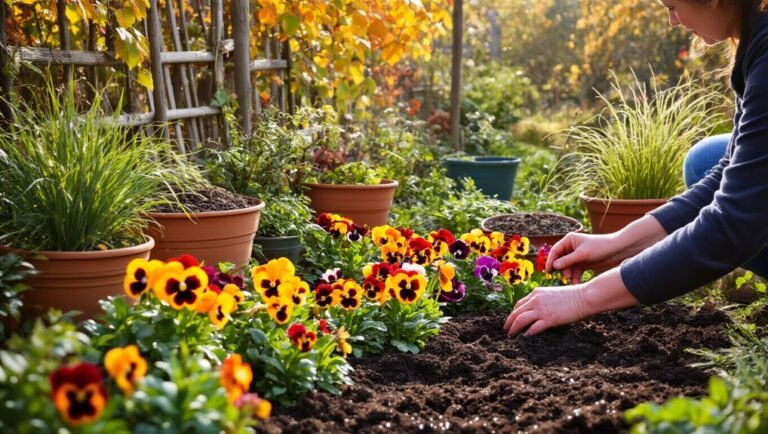If you’re into winter gardening, you’ll love how vegetables like kale, Brussels sprouts, carrots, parsnips, and Swiss chard taste better after a frost. The cold weather sweetens their flavor and makes them more tender. Kale’s leaves shine, Brussels sprouts become sweeter, and carrots offer a crisp texture. Parsnips and Swiss chard also transform, enhancing their natural taste. Curious about other winter gardening tips and tricks? Keep exploring for more insights!
Key Takeaways
- Kale’s leaves become sweeter and more tender after frost, making it ideal for salads and smoothies.
- Brussels sprouts taste sweeter and have improved texture post-frost, enhancing their flavor when roasted or sautéed.
- Carrots gain a sweeter flavor and crisp texture after frost, perfect for salads, soups, or roasted dishes.
- Parsnips transform into sweeter roots after frost, ideal for roasting, mashing, or adding depth to soups.
- Swiss chard’s leaves become more tender and flavorful after frost, making it great for sautés and salads.
Kale
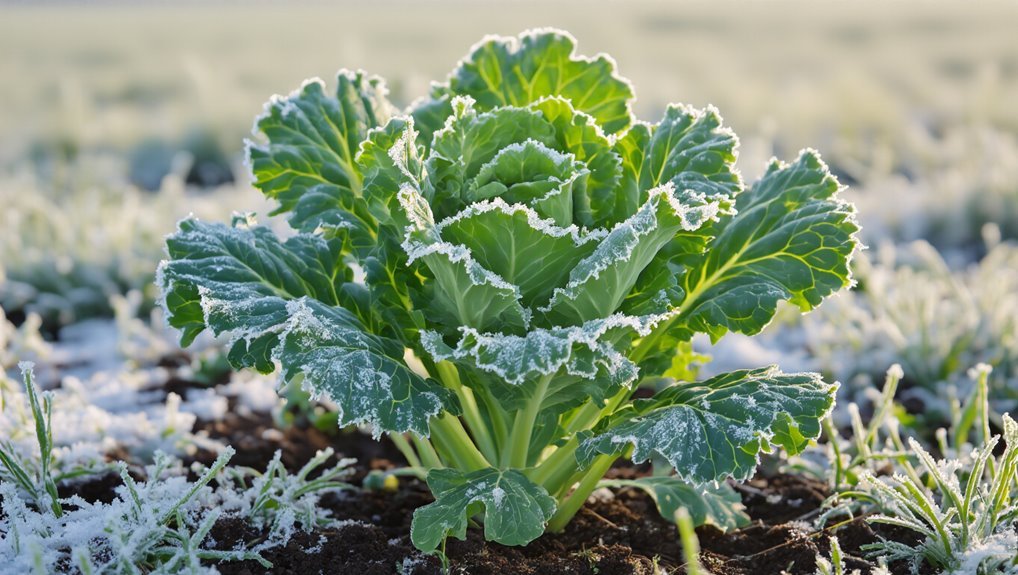
Kale truly shines after a frost, as the cold weather sweetens its leaves and enhances its flavor. When you grow kale in your garden, you’ll notice that the leaves become tender and less bitter after a freeze. This makes it perfect for salads, smoothies, or cooked dishes.
You can pick kale right after a frost, and you’ll be rewarded with a delicious harvest. Plus, kale is hardy, thriving even in chilly temperatures, which means you can enjoy fresh greens during winter months. Giving your kale a boost with the best plant food options can help ensure your plants stay healthy and productive throughout the season.
To maximize its flavor, try lightly sautéing it with garlic or adding it to soups. You’ll appreciate how versatile and nutrient-rich this leafy green can be, making your winter meals both satisfying and healthy. For even healthier growth, consider using plant fertilizer tablets to boost your garden’s productivity and ensure your kale thrives all season long.
Brussels Sprouts
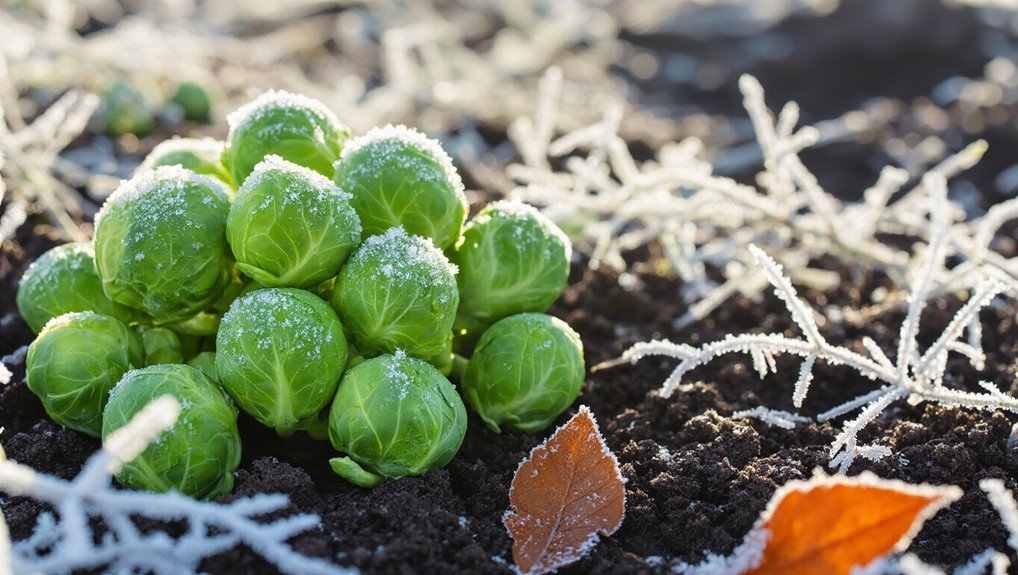
After enjoying the sweetened flavors of kale, you might be surprised to find that Brussels sprouts also improve significantly after a frost.
When temperatures drop, these little green gems undergo a transformation. The cold weather breaks down their starches into sugars, making them taste sweeter and more flavorful. If you want to protect your Brussels sprouts during colder months, consider using organic mulching materials around the base of your plants to help insulate the roots and retain soil moisture.
Harvesting Brussels sprouts after a frost can yield a more tender texture, too. You’ll want to pick them when they’re firm and vibrant, ensuring you get the best taste.
Roasting or sautéing them enhances their natural sweetness, giving you a delicious side dish that complements winter meals perfectly.
If you want your Brussels sprouts to thrive and taste their best, starting with the best garden soil can make a significant difference in their growth and flavor.
Carrots
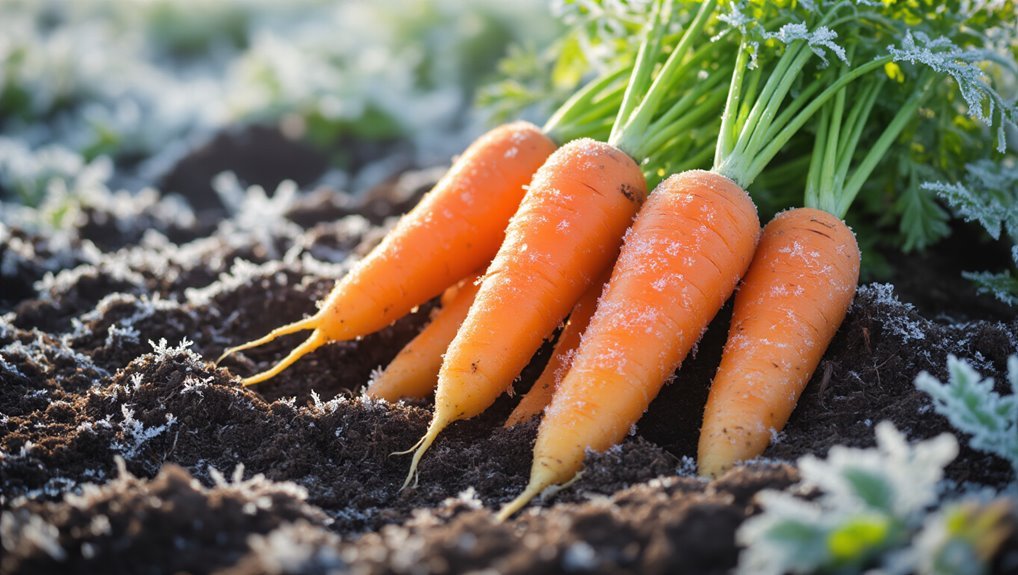
When temperatures dip and frost blankets the ground, you’ll find that carrots become even sweeter and more flavorful. The cold triggers a natural process, converting starches into sugars, which enhances their taste.
If you’ve left your carrots in the ground, now’s the perfect time to harvest them. Digging them up after a frost not only ensures a crisp texture but also allows you to savor that delightful sweetness. Having the right garden trowel can make harvesting carrots more efficient and help prevent damage to the roots.
You can enjoy your carrots raw in salads, roasted for a warm side dish, or blended into soups. They’re versatile and add a vibrant color to your winter meals.
Using a hand rake can make harvesting carrots after a frost much easier and gentler on both the roots and the soil.
Parsnips
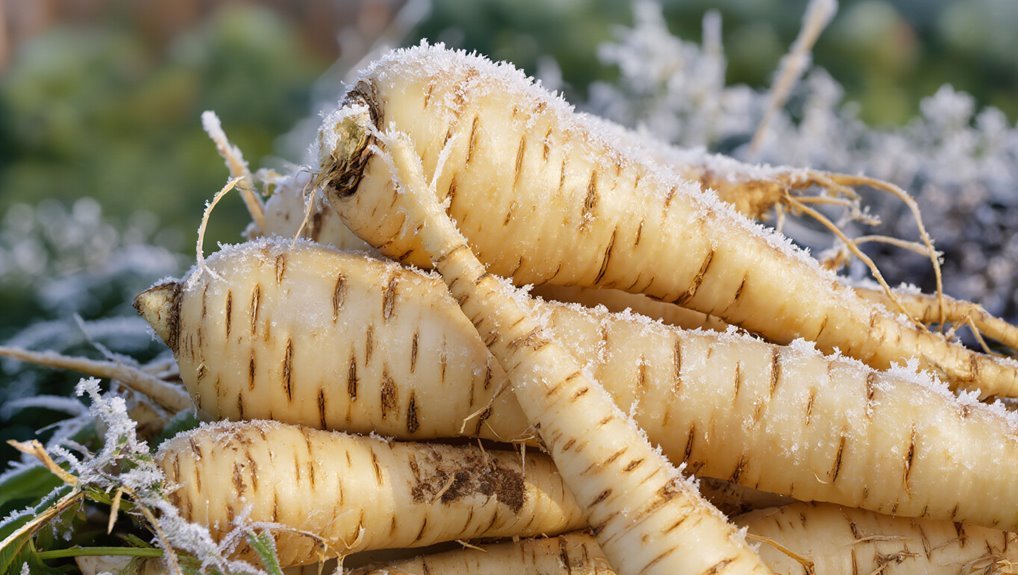
As temperatures drop and frost sets in, you’ll discover that parsnips transform into a sweeter, more flavorful root vegetable. The cold weather triggers a natural process, converting starches into sugars, giving them that delightful sweetness. If you want your succulents to thrive indoors during winter, it’s important to use the right plant care kit tailored for their needs. If you haven’t harvested your parsnips yet, now’s the perfect time. Pull them from the ground after a frost for the best taste. You can enjoy them roasted, mashed, or in soups, adding depth to your winter meals.
Plus, parsnips are packed with nutrients, making them a healthy choice for your diet. Just remember to store them properly in a cool, dark place to maintain their flavor.
For those looking to grow their own parsnips, starting with seed starting kits can give your garden a strong and successful beginning.
Embrace the frost, and savor the deliciousness of your winter garden’s parsnips!
Swiss Chard
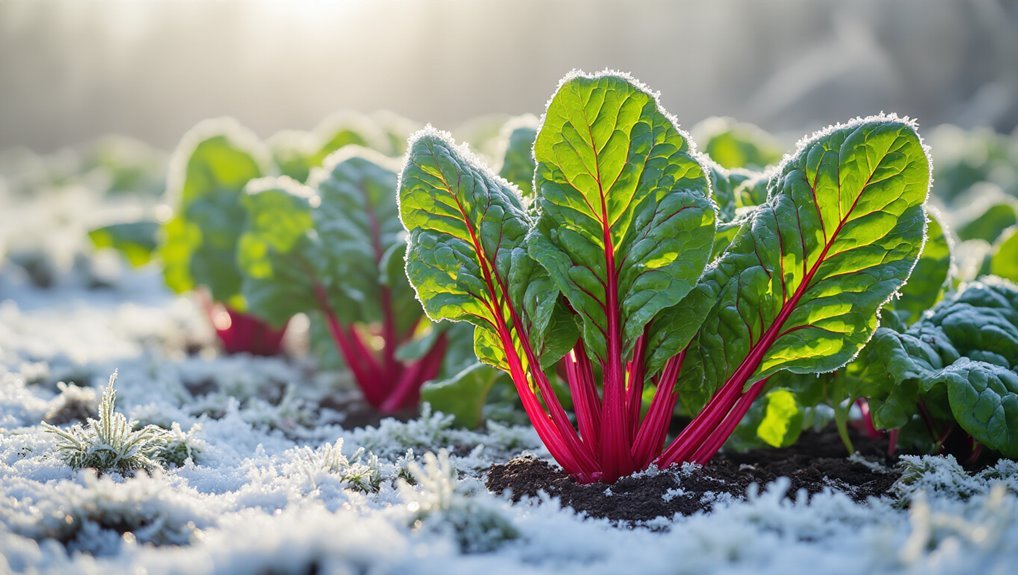
Frost doesn’t just enhance the sweetness of parsnips; it also brings out the best in Swiss chard. After a chilly night, you’ll notice that the leaves become more tender, with a flavor that’s richer and nuttier.
Harvesting Swiss chard post-frost is a delightful experience, as you’ll enjoy its vibrant colors and satisfying crunch.
- Bright green and ruby-red stems stand out in your garden.
- Leaves become sweeter, making them perfect for sautés or salads.
- The texture is softer, allowing for easy cooking and blending.
- Swiss chard can withstand winter’s chill, providing fresh greens even in the cold.
Frequently Asked Questions
How Does Frost Affect the Sugar Content in Vegetables?
Frost causes plants to produce more sugars as a natural defense mechanism against cold temperatures. You’ll notice that vegetables exposed to frost often taste sweeter because their sugar content increases, enhancing their flavor profile significantly.
Can I Harvest These Vegetables Before a Frost?
Sure, you can harvest those veggies before frost hits. Just keep an eye on the weather and pick them early if the temperature drops. Fresh produce is always a win, even if it’s not winter yet!
What Are the Best Frost Dates for My Region?
To find the best frost dates for your region, check local agricultural extensions or weather websites. They provide accurate information based on historical data, ensuring you can plan your gardening activities effectively and protect your plants.
How Should I Store These Vegetables After Harvesting?
After harvesting, wash the vegetables gently, remove any dirt, and let them dry completely. Store them in a cool, dark place, or use breathable bags in the fridge for optimal freshness and flavor retention.
Do All Vegetables Improve in Taste After Frost?
Not all vegetables improve in taste after frost. Some, like carrots and kale, develop sweetness, while others may lose flavor or texture. It’s best to experiment with what you grow to discover your favorites.
Conclusion
As you explore winter gardening, keep in mind that vegetables like kale and carrots can actually become sweeter after a frost, thanks to their natural processes. In fact, studies show that frost can increase sugar content by up to 30%! So, don’t shy away from those chilly nights; embrace them! By harvesting after a frost, you’ll enjoy a burst of flavor in your meals, making winter gardening not just practical, but deliciously rewarding too.
